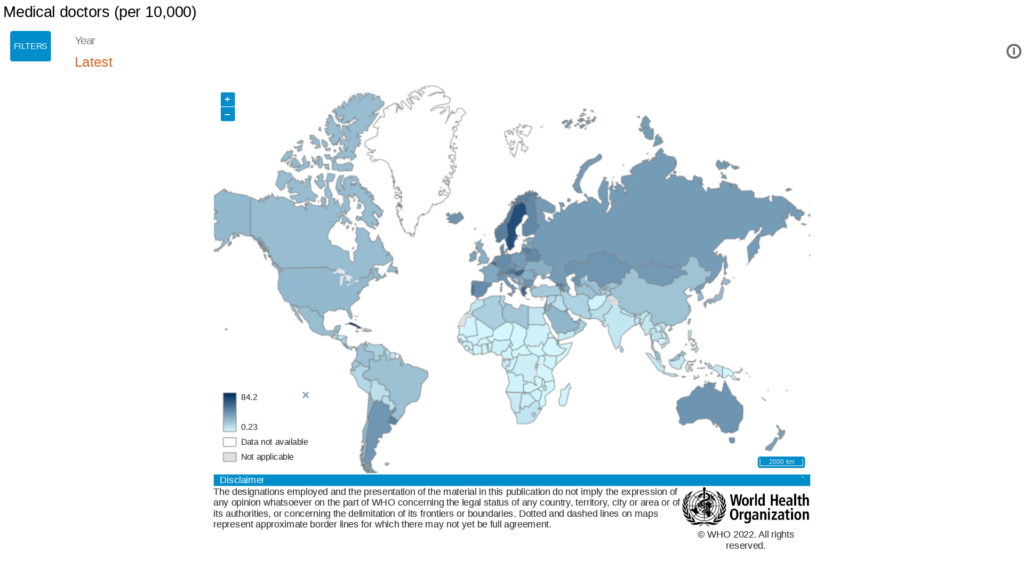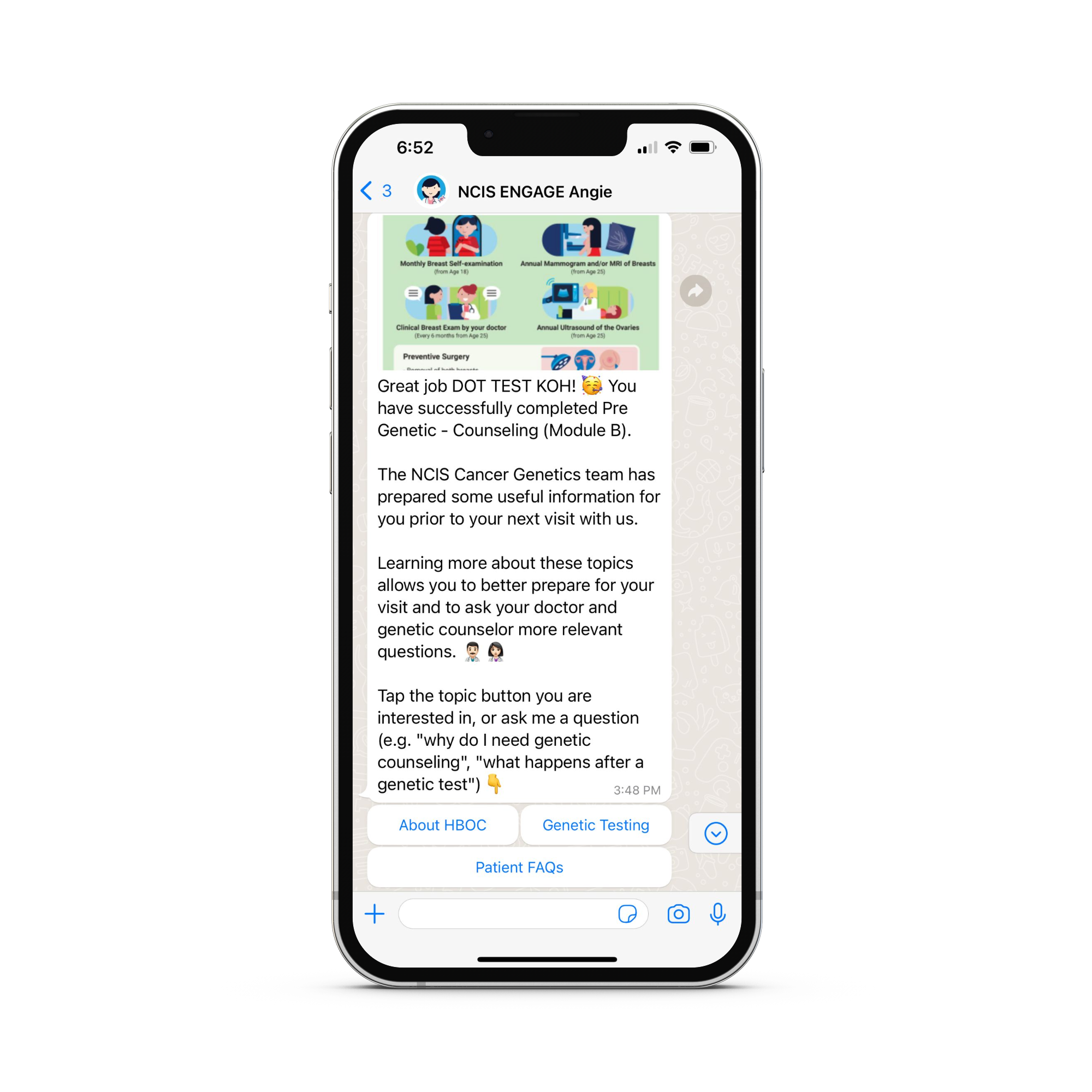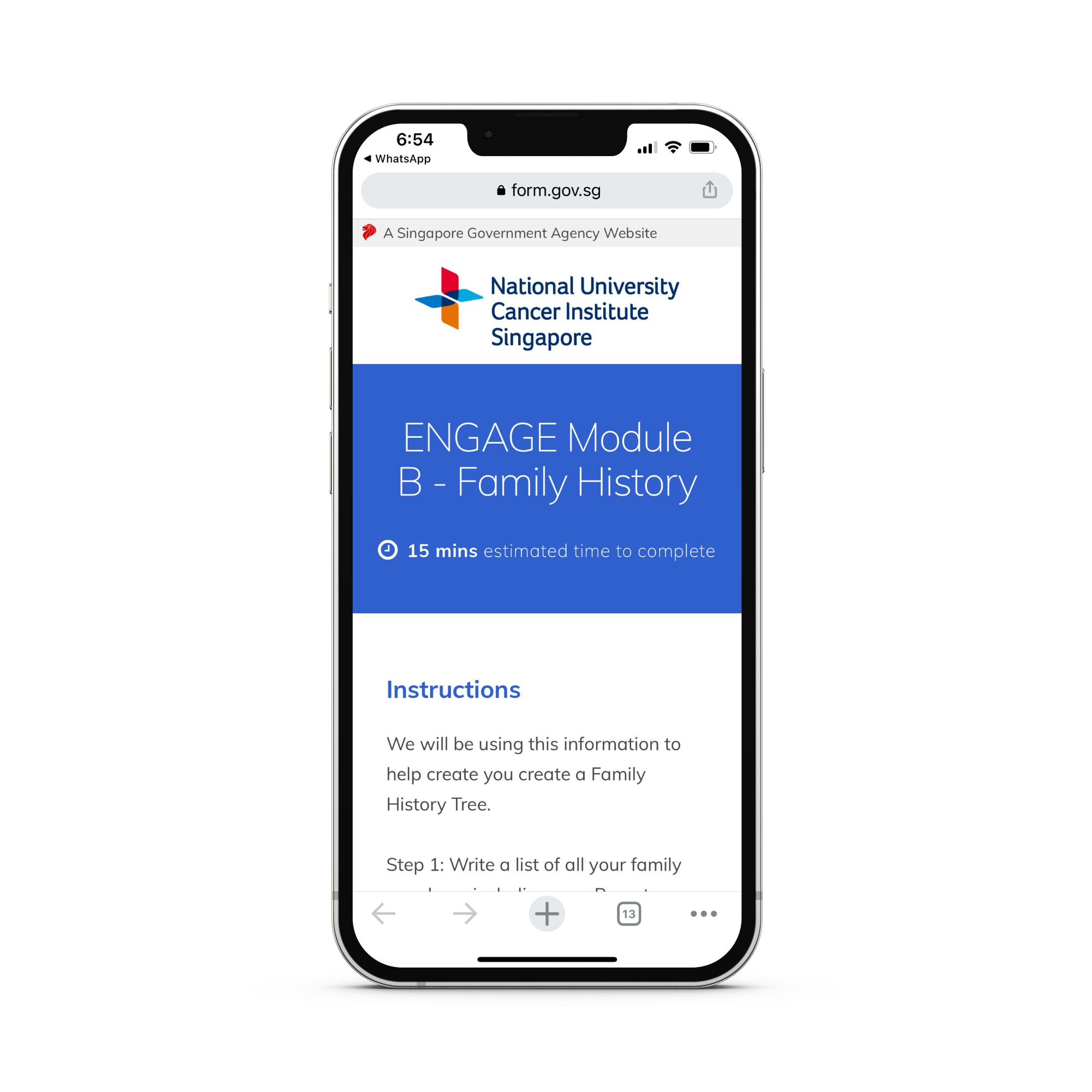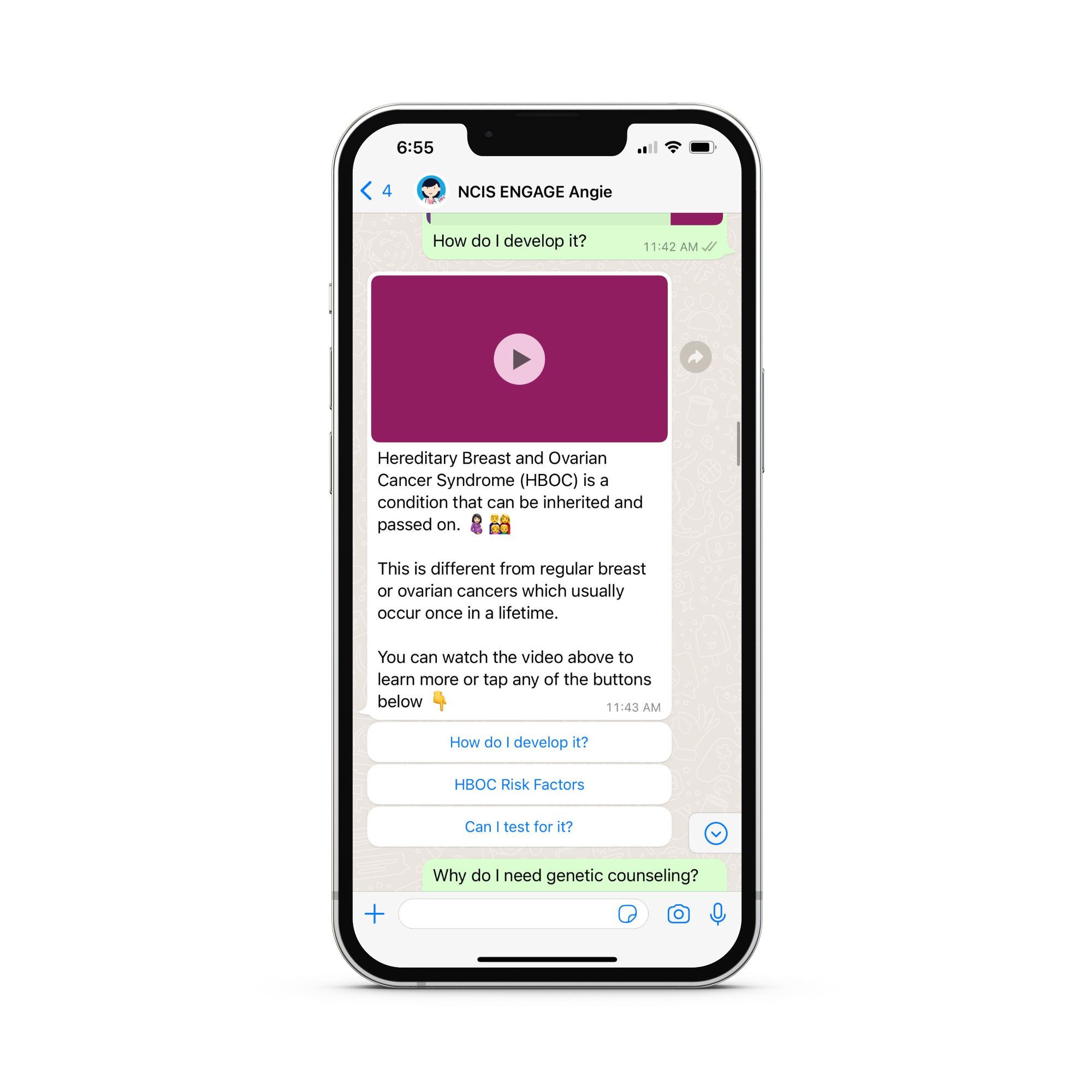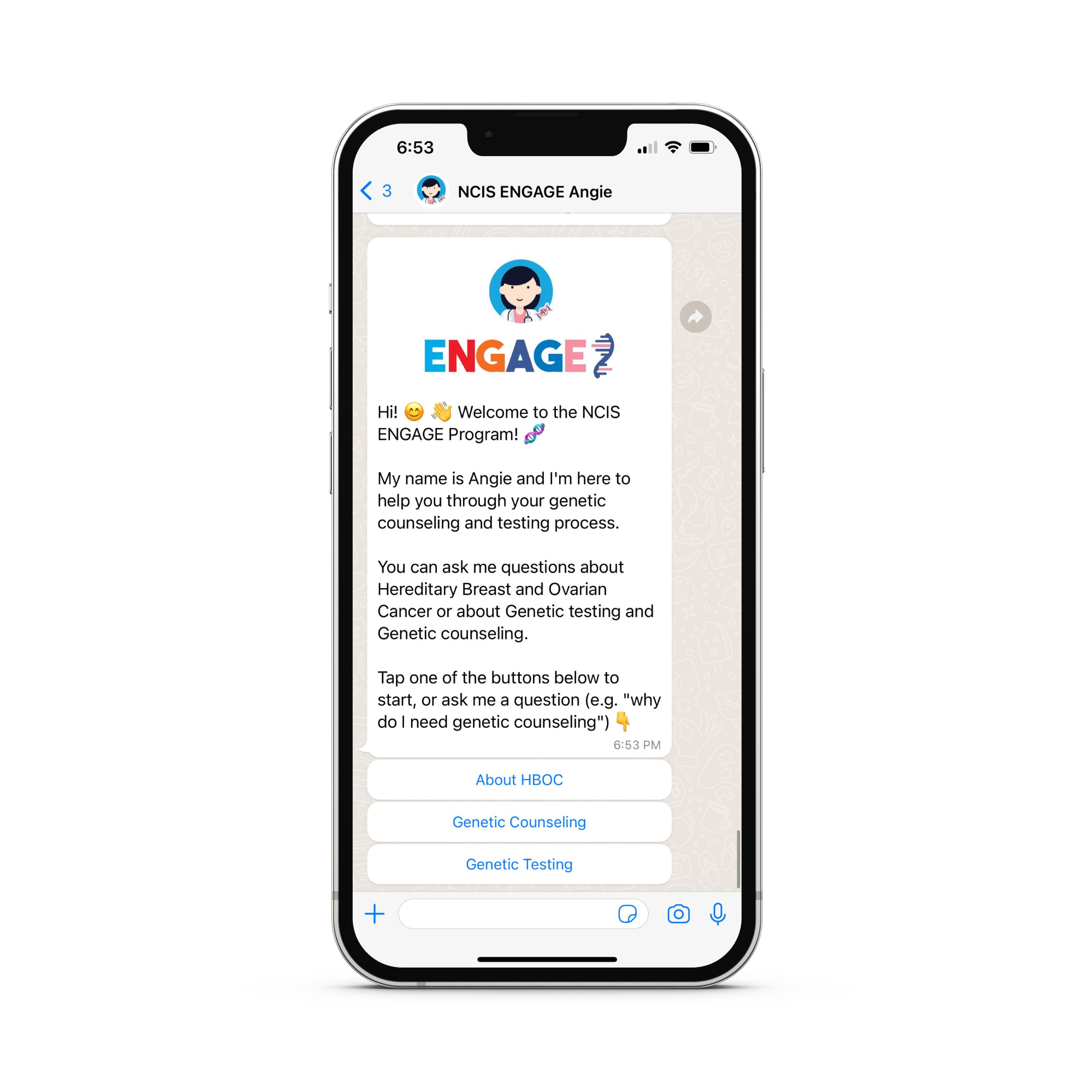Bot MD Care: Automating Clinical Monitoring and Patient Education for Scale to Address the Healthcare Workforce Shortage
The Healthcare Workforce Shortage
The healthcare workforce plays a central role in advancing progress towards universal health coverage and Sustainable Development Goal 3: Good Health and Well-being. However, the unavailability and inaccessibility of healthcare workers is one of the biggest constraints around the world, especially in low- and middle-income countries in Asia. The labour shortage in healthcare is expected to rise as demand for healthcare grows in the consecutive years, with the World Health Organization (WHO) estimating a projected shortfall of several million healthcare workers by 2030.
The lack of adequate healthcare worker capacity is due to several key causes related to the demand and supply of healthcare workers. The growing ageing population is increasing the burden of noncommunicable diseases and long-term care on health systems. Additionally, global pandemics, such as COVID-19, take a toll on healthcare workers who are challenged to manage the pandemic while preserving existing essential health services. As the demand for healthcare workers grows, the supply is not proportionately increasing. This is due to difficulties in the education, training, employment and retention of healthcare workers, thereby exacerbating healthcare worker shortfalls especially in rural and underserved areas.
Healthcare workers are one of the most important inputs of a health system; quality of care is dependent on their availability, accessibility, acceptability and quality. To address the healthcare worker shortage, technology can play a huge role in amplifying and scaling care.
Click on the below image to explore medical doctor density globally. The recommended baseline is 23 medical doctors per 10,000 people.
Bot MD Care: an A.I. Patient Monitoring and Engagement Platform
Digital health and A.I. tools have immense potential to solve many of today’s impending global health challenges. This case study will focus on Bot MD Care, a patient monitoring and engagement platform that uses A.I. to power popular chat applications like WhatsApp, Viber, Facebook Messenger and LINE. Bot MD Care is one of the products designed by Bot MD, a Y-combinator backed A.I. health technology start-up in Singapore with the mission to empower healthcare professionals around the world.
Key Workflows of Bot MD Care
Patient workflows can be automated and customised across a range of clinical use cases including post-surgery recovery, infectious diseases, paediatrics, oncology, primary care and chronic diseases (hypertension, diabetes and kidney disease).
- Clinical monitoring
Doctors can monitor a wide range of clinical parameters, vital signs and symptoms. Bot MD Care integrates with popular form builders, such as Typeform and Google Forms, that can collect patient submitted photos, files and clinical values. On the Bot MD Care Dashboard, doctors and nurses can easily log in to view and manage patient submissions, alerts and clinical trend graphs. The dashboard is available on mobile and desktop browsers, making it convenient for clinical users in emerging countries to access. Alert fatigue is minimised by allowing providers to set alert thresholds for individual patients (therefore for instance, if a patient has abnormally high blood pressure in general, the threshold will be set accordingly so the provider is not constantly notified). The A.I. bot is also able to triage submissions based on these pre-set alert thresholds, allowing doctors to hone in on the patients who are more critical.
- Patient Reminders
Bot MD Care delivers automated reminders and forms to patients through chat platforms at customised frequencies set by doctors and nurses.
- Patient FAQs
Doctors can also train Bot MD to respond to patient FAQs instantly, circumventing the need to speak to a human.
- Patient Education
The Care Dashboard allows doctors and nurses to automate the sending of targeted education messages to patients through videos, images, interactive buttons and text. A direct real-time communication channel between patient and provider can also be established by the platform if required, bypassing the need for the clinical team to share their personal contact with the patient.
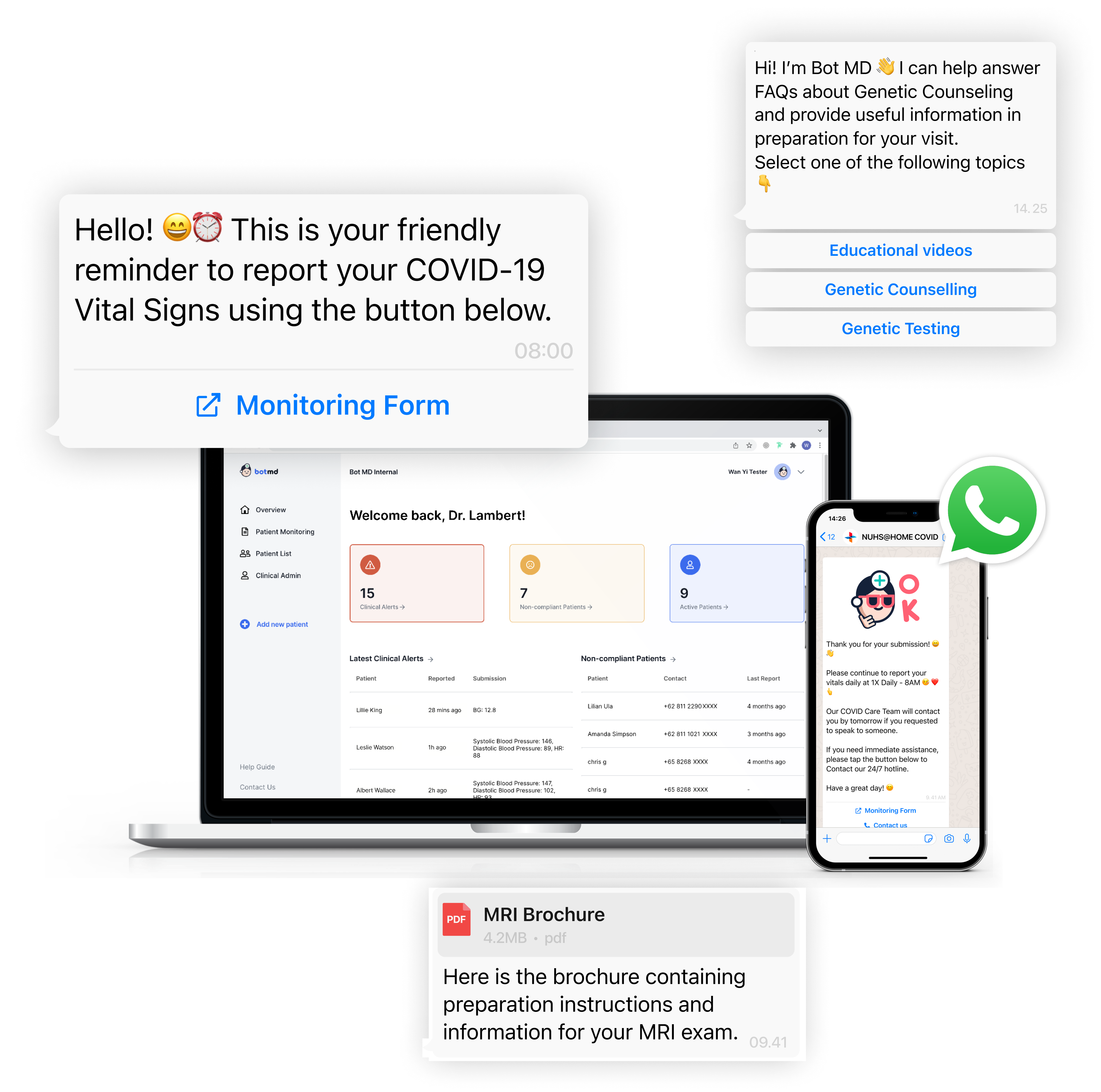
Credits: Bot MD
Applications in Patient Monitoring, Education and Disease Management
Bot MD Care is a versatile platform that is currently being expanded into many different clinical settings to automate workflows. In this section, three primary use cases – related to patient reported outcomes, patient education and chronic disease management – are curated to showcase the potential applications of Bot MD Care.
1. Monitoring of COVID-19 Patients (Singapore)
Challenge
One of the earliest and biggest COVID-19 outbreaks in Singapore occurred among low-income migrant workers who lived in under-resourced and cramped dormitories. To avoid overwhelming hospital capacity, it became necessary to care for and monitor migrant workers with COVID-19 within their dorms. In response to this, the National University Health System (NUHS) worked with Bot MD to create SGDormBot – the predecessor to Bot MD Care – and launched it at 6 migrant worker dormitories to allow doctors to remotely monitor patients’ health and intervene quickly when needed.
Strategy
Functionality of SGDormBot
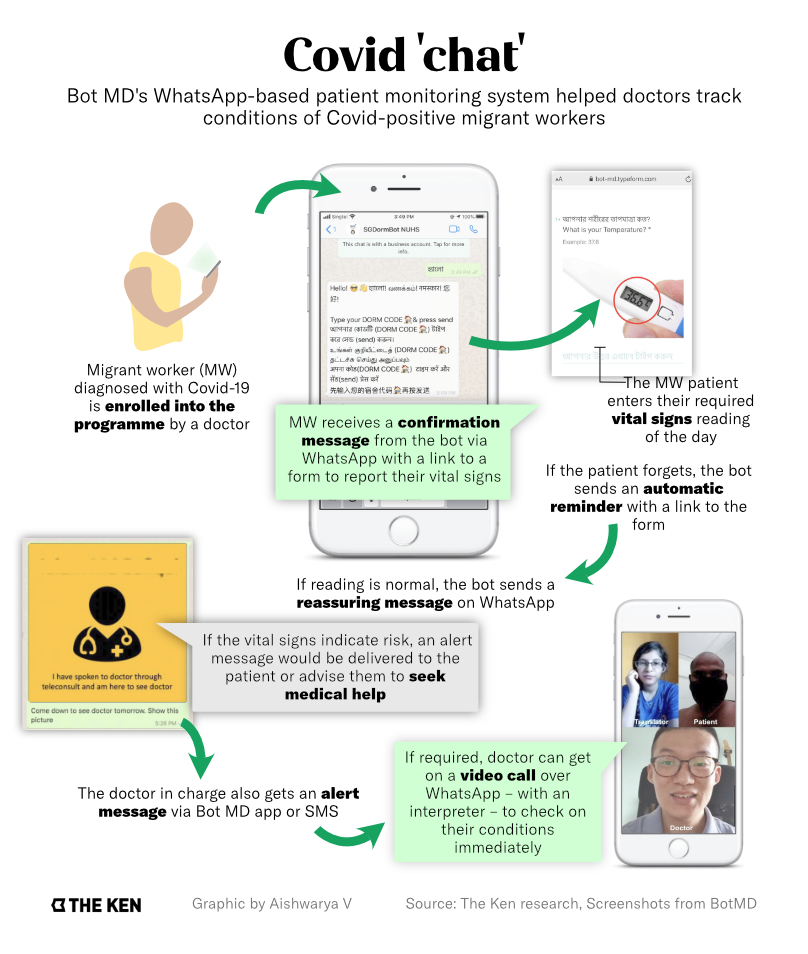
SGDormBot’s interface was intentionally designed to be user-friendly and intuitive to address the linguistic diversity (most migrant workers only speak their native languages, which is usually Bangla, Tamil, Mandarin or Hindi) and the lack of technological literacy among the target population of migrant workers. The chat bot worked on familiar consumer messaging apps (like WhatsApp), online forms had pictorial questions with binary answers and automatic progression and all interactions on the interface could be conducted in different languages. In addition, volunteer translators were available to join telemedicine consultations. Migrant workers also attended a short training session at the outset to get acquainted with the technology. Throughout the process, the chat bot underwent iterative improvements based on continuous incoming feedback from migrant workers and clinicians. By creating a user-centric and interactive chat bot with all these features, it enabled rapid adoption and high compliance.
View the below video to learn more about the thought process behind the design of SGDormBot
Credits: Channel News Asia, June 2020
Outcome
Healthcare workers: Remote vital signs monitoring helped to reduce COVID-19 exposure to healthcare workers, address provider shortages by prioritising their time and free up bed spaces in hospitals.
Migrant workers: Patients enjoyed the comfort of recovering at home while being assured they can get the medical support they need. A British Medical Journal study revealed that SGDormBot achieved high patient satisfaction and an 85% engagement rate.
Cost: SGDormBot was concluded to be a safe community-based digital health intervention that was highly cost-effective.
With home recovery becoming the default care model for COVID-19, SGDormBot transformed to become Bot MD Care. Bot MD Care was used to provide vital signs monitoring to over 4,000 COVID-19 patients in Singapore and recently received the WHO (Western Pacific) Innovation Award for scaling COVID-19 vital signs monitoring and telehealth.
2. Genetic Counselling (Singapore)
Challenge
Those at risk of hereditary breast and ovarian cancer (HBOC) in Singapore are referred to the National University Cancer Institute (NCIS) Cancer Genetics Clinic for genetic counselling. However, patients often feel overwhelmed by the cumbersome counselling process and by the large amount of information provided.
Strategy
NCIS partnered with Bot MD Care to launch an A.I. chat bot on WhatsApp, named “Angie”, that aims to transform the patient experience in genetic counselling. Angie automates the collection of family medical history for risk assessment through bite-sized modules on WhatsApp, and patients can complete this section at their own convenience. In between modules, Angie sends information on HBOC, genetic counselling and testing through educational videos and infographics. The chat bot has also been trained to answer FAQs on hereditary breast cancer, risk reducing strategies and genetic testing costs. In this way, Angie helps to provide targeted education so that patients can be better informed and less overwhelmed before their first genetic counselling session.
View the below video for a webinar on the creation of Angie
Credits: Bot MD
Outcome
Angie makes the genetic counselling process more approachable and accessible for patients at risk. NCIS and Bot MD Care hope to expand Angie to other countries in Asia in the future.
“Angie had covered most of my concerns as a patient before going through consultation. I like all the infographics too; very easy to understand, clean, brief and very on point explanations.” – Angie User
Screenshots of Angie
Credits: Bot MD
3. Monitoring of Nephrology Patients (Philippines)
Challenge
The National Kidney and Transplant Institute (NKTI) is the largest kidney specialty hospital in the Philippines with about 1,500 hemodialysis (HD) and peritoneal dialysis (PD) patients scattered across the country. Monitoring and catching early signs of peritonitis is crucial to ensure patients are able to receive dialysis at home and remain on treatment. Without Bot MD Care, NKTI nurses would have to call patients weekly to check on their health statuses. In some instances, nurses would have to travel to patients’ homes to view their home environment and dialysis set-up.
Strategy
To monitor HD, PD and kidney transplant patients daily for any signs of infection in a simple way, Bot MD Care was employed for patients to submit their clinical parameters (symptoms, access site infection and photos of access site) and lab results through Viber, which is a commonly used messaging app in the Philippines. The bot also triages submissions and flags out patients who need intervention, allowing nurses to streamline their workflows.
View the below video to understand how NKTI uses Bot MD Care in the Philippines
Credits: Bot MD
Outcome
NKTI launched the Bot MD Care patient monitoring service to all dialysis and kidney transplant patients during the National Kidney Month (June) in 2022. In the near future, NKTI plans to expand the platform to help monitor other patient conditions such as post-surgery urology patients as well as power other consumer messaging platforms such as Facebook Messenger.
View the below video to understand the positive impact of Bot MD Care on kidney patients in the Philippines
Credits: UNTV News and Rescue, June 2022
Critical Success Factors
The secret to Bot MD Care’s rise to success lies in several well-crafted features of the platform, including the use of A.I., piggybacking on popular consumer chat apps and its versatility.
Leveraging on A.I. to empower healthcare professionals through scale and reach
- Scalability
Through A.I. and automation, Bot MD Care improves workflow efficiencies and streamlines administrative processes. This relieves doctors and nurses of manual duties like registration, triaging, queue management, payment and case summaries so that they have time to consult more patients and focus on the cases that need attention, thereby scaling up care. In this way, the healthcare workforce shortage is abated not by increasing the number of healthcare workers but by increasing the bandwidth of the existing ones. The resources freed up by the use of automated tools should remain within the health system and can be used to cater to patient populations that cannot easily rely on these digital tools, such as the disabled.
In addition, the use of technology and A.I. enabled Bot MD to rapidly respond to the needs on the ground during the COVID-19 pandemic through SGDormBot and Bot MD Care. Traditional healthcare providers would have found it challenging to meet the sudden surge in demand; digital innovations can be very helpful in swiftly scaling up care in times of emergency.
- Reach
In low and middle-income countries in Asia, access to healthcare is often hindered by distance and waiting times. The digital connection supported by Bot MD Care allows healthcare professionals to deliver care to patients in remote locations, thereby reaching patients they traditionally would not have been able to while also saving their own time that would have been lost in travel. The virtual connection is especially beneficial in archipelago countries, like Indonesia and the Philippines, where residents are scattered across the country and healthcare access is limited.
Piggybacking on ubiquitous apps to drive rapid adoption
Technology is most likely to succeed when it seeks to augment and not alter human behaviour. In the case of Bot MD Care, the use of commercially popular consumer chat platforms (e.g. WhatsApp in Indonesia, Malaysia and Singapore; Viber and Facebook Messenger in the Philippines; LINE in Thailand) creates a frictionless and straightforward user experience since there is no need for the patient to download a separate app nor learn new technologies. By riding on the current habits and behaviours of patients, Bot MD Care used innovation, tech disruption and human-centric design to re-purpose consumer chat platforms. Due to this, costs were low, overall compliance rate was 90% and penetration among the elderly – who found apps like WhatsApp easy to use – was high.
Enabling versatility to expand applications
Since the bot automates traditional workflows, it can be used in different countries and clinical settings. Currently, the platform is available in English, Malay, Mandarin, Bahasa Indonesia, Spanish and Tagalog. The company has plans to include Thai and Vietnamese over the next few months. The platform can also be re-purposed for use in different clinical settings, ranging from infectious diseases (such as COVID-19 etc) to non-communicable diseases (such as hypertension, diabetes etc). The customisable and versatile platform therefore has much potential for adaptation and expansion.
Potential Areas of Concern
Digital health innovations, such as Bot MD Care, are fundamentally transforming traditional models of care. While digital health amplifies scalability, access and efficiency of care, the addition of technology adds new risks and areas of concern to consider.
Monitoring and evaluation to mitigate risks
First, regular auditing of digital pathways is essential to identify and manage risks. In the case of Bot MD Care, the A.I. algorithm cannot be blindly relied on and needs to be checked at regular intervals to prevent bias and malfunctions.
Second, the rise in data breaches and cybersecurity threats have raised security concerns over data protection and privacy. While Bot MD Care is ISO 27001 certified and encrypts all sensitive patient information, the platform should be constantly updated in accordance with regulatory shifts to ensure the highest level of patient safety and quality of care.
Contingency plans for outlier cases
Digital health tools should promote rather than prevent care delivery. There needs to be a clear and workable way for patients to access care if the tool is unsuitable for any reason (for example, if the tool unexpectedly shuts down or if there is a seriously unwell patient who needs emergency care). With Bot MD, the system is designed to send alerts and messages through SMS if the chat platform experiences unforeseen downtime. In addition, to ensure unwell patients can access the care they need, Bot MD Care supports this by providing instant information on hotline numbers and other important contacts. Additional safeguards may also be required for digital triaging and electronic decision support tools; for instance, clinicians should be able to override recommendations from these platforms when they think it is in a patient’s best interest.
Digital literacy training to enhance equity
User training and digital literacy are important pre-requisites for any digital health model of care to be adopted successfully. Similar to how Bot MD trained migrant workers to use SGDormBot, the company may need to replicate these efforts as Bot MD Care is expanded to other countries in Asia with a diverse customer base. In addition, running pilots and adapting the tool in response to user feedback can enhance equitable access and user acceptability.
Looking Forward
As healthcare challenges evolve, especially in the context of healthcare manpower shortages, growing ageing populations and the rise in chronic diseases, digital health solutions can play an integral role in shaping new models of care that can address these challenges effectively. For instance, NUHS set up an innovative COVID-19 Virtual Ward for patients to recover at home while having access to teleconsultations, vital signs monitoring through Bot MD Care and home visits if necessary. A retrospective study demonstrated that Bot MD Care had a compliance rate of 84% in this clinical setting, even among the multilingual elderly. Bot MD Care is an example that stands out due to its piggybacking on massively popular consumer chat platforms, which helped it grow much more than it would have organically. Since its launch in 2020, Bot MD Care has been adopted rapidly across Singapore, Indonesia, the Philippines, Malaysia and Mexico, and the company has plans to expand into Thailand and Vietnam in the near future. However, as digital tools proliferate and change our models of care, rigorous studies need to be conducted on the longer-term effectiveness of these interventions. In the urgency to expand care through digital health, the quality of care must not be compromised.
By: Nikita Kanumoory Mandyam (NUS SSHSPH)
This case study was developed in consultation with Dorothea Koh, Founder and CEO of Bot MD
November 30, 2022


